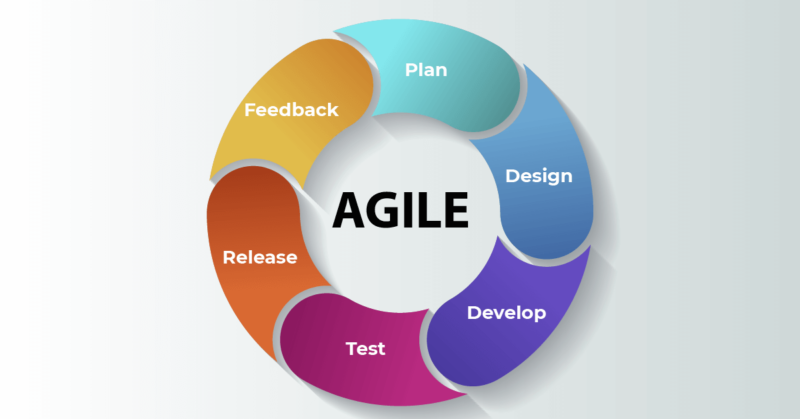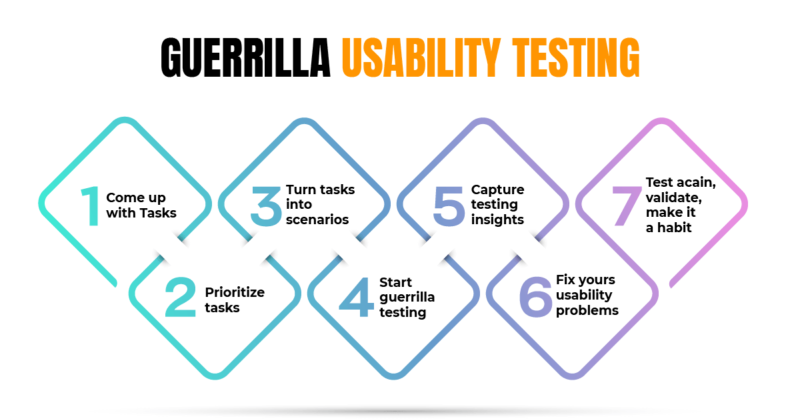
- Agilemania
- Feb 9th 2023
Let’s imagine you’re a ghostwriter and you’re writing an article for one of your clients. Now instead of asking for any early feedback, you write the entire article and send it to your client at once. But unfortunately, the client gave feedback like the article sounds too formal, it has grammatical errors, or it doesn’t align with their brand voice. In short, they hated it! Frustrating, right?
To get such negative reviews after putting so much effort into writing an entire article. This is where the Agile feedback loop becomes a crucial factor. Instead of asking for feedback at the end moment, it’s important to get it periodically. The picture below describes the fast feedback approach you can use while writing the article: 0 Just like the above example, the agile team also uses this fast feedback loop in Scrum to ensure the product development process is heading the right way.
Let’s learn more about why fast feedback is a crucial aspect of Agile and how you can improve its usefulness.
What is Fast Feedback Loop in Agile
Fast feedback or an Agile feedback loop is a way to boost productivity in work performance, team projects, or development processes. It’s a mechanism that helps to validate the work process and identify areas for improvement. In short, it enhances your work quality by getting fast feedback.In agile, the fast feedback loop is a repeating cycle where team members can share information, evaluate it, update it, and repeat the process.
The fast feedback method leaves room for iterative development and constant learning.
Why You Need to Adopt Fast Feedback Loop in Agile
Any organization needs to keep track of its own performance and look for ways to grow and stay afloat in the market. They need to improve their past performance to stay competitive. And Fast feedback loops are one of the most crucial methods to achieve such improvements. Why? Because fast feedback means a fast way to understand what is going well in your business or what went wrong. The faster you’ll get to learn your issues, the faster you’ll be able to resolve them.
When you adopt the fast feedback approach in your organization, the workforce will adopt a learning mindset. Instead of focusing on finishing the task faster, your team will focus on learning as much as possible and implementing the knowledge to produce a better result.
Why? Because fast feedback means a fast way to understand what is going well in your business or what went wrong. The faster you’ll get to learn your issues, the faster you’ll be able to resolve them.
When you adopt the fast feedback approach in your organization, the workforce will adopt a learning mindset. Instead of focusing on finishing the task faster, your team will focus on learning as much as possible and implementing the knowledge to produce a better result.
In the fast feedback approach, organizations learn to be flexible and make changes based on feedback responses. Rather than being happy with best practices, the team put more stress on improving better practices. Scrum feedback loop, such as sprint review, is an in-house process. That’s why the development team can work on it as soon as they close the study.
This quick feedback process allows them to take action that makes an impact. On the contrary, in traditional feedback methods, the long lag between gathering feedback and taking action can create “survey fatigue” among the employees. “Change something=> Find out how it went => Learn from it => Change something again. Generally speaking, you want as short a feedback loop as possible to adapt your process quickly.”- from the book “Kanban and Scrum: Making the Most of Both” by Henrik Kniberg and Mattias Skarin.
7 Ways to Improve Fast Feedback Loop in an Agile Environment
The fast feedback process in agile is responsive, encourages learning, and builds effective collaboration between team members. Here are the top seven ways you can apply to improve the fast feedback process in your organization:
1. Start Sprint Review Meetings
The first step to getting rapid feedback is holding a review meeting after each sprint. If you aren’t already doing that, it’s the right time to start! Sprint reviews focus on the developing product that is built during the sprint. The entire scrum team meets during the sprint review to gather feedback on the previous sprint. Now several organizations fail to conduct these sprint review meetings at the end of each sprint.
Because they think it helps them save time in developing the product. But in reality, less frequent meetings can create small issues and misunderstandings, which lead to bigger problems after a few sprints. That’s why getting faster feedback is crucial to start organizing sprint review meetings consistently. Many product owners or scrum development teams mistakenly believe that review meetings are the only way to demonstrate what was done or accomplished during the last sprint.
And they don’t include Sprint Retrospective meetings in the Sprint cycle. However, the main point of these meetings is to gather feedback from business stakeholders and ask relevant questions about the product. During sprint review meetings, the scrum team discusses what went well and what was not finished. The stakeholders can provide feedback like- what’s the market status? What are customer insights? What goals can be the next development goals?
2. Conduct Sprint Retrospectives
Another crucial aspect of getting feedback is conducting sprint retrospectives. A lot of organizations confuse retrospectives with review meetings. As a result, they skip the part during product development. However, the sprint retrospective is completely different from a review meeting. Sprint retrospective meetings are conducted after the sprint review and typically on the same day.
In retrospective meetings, the scrum team meets to gather feedback on their performance or work process. They discuss the following questions to improve their next sprint:
- What went well?
- What went wrong?
- What actions do you need to take to improve?
If you’re looking for ways to make your sprint reviews and retrospective meetings more effective, join our Certified Scrum Master® (CSM) Certification Training today.
3. Ask Targeted Questions
While providing feedback, don’t ask close-ended questions like Did you like it? What do you think about this? Etc. These kinds of questions generate answers such as “I like it.” Instead, ask open-ended, specific, or targeted questions to generate action-oriented feedback.Asking good questions during the feedback loop in scrum can help your team discover their challenges and develop better solutions to resolve these issues. Here are some examples of targeted questions you can ask to improve fast feedback:
- Does this feature solve the problem a user is trying to solve?
- Do you find the product convenient to use? Why or why not?
- Is there anything we missed that users want to add?
- Do you notice where we can improve the product?
4. Conduct User Testing
With a review meeting after each sprint, you may decide to add one-at-a-time user testing. Once your scrum team has developed a feature or solution, demonstrate the feature with a small group of users. You can also use a product prototype or a particular feature to understand their thoughts. Ask for their feedback and learn from it to improve your future sprints. Conducting one-at-a-time user testing or review with a small group of customers allows you to gather high-quality feedback.5. Seek User Feedback
Always aim to gather feedback directly from the users and not stakeholders. To solicit high-quality feedback from users, you can try the following ideas:
a) Involve them During Sprint Review: You can invite a small user group to attend sprint reviews. This will allow your team to stay in a fast feedback loop from real users. Let them use your product and ask questions like- “What do they feel about the new features?” “Do they find the product user-friendly?” etc. While gathering feedback from the users, creating a safe environment where they feel comfortable using the product appropriately is crucial.
b) Arrange a Review Bazaar: A product bazaar is an engaging way to get rapid feedback from a large group of customers or stakeholders. In the product bazaars, several stalls or market stands to get assembled where you can review a product's different features. For instance, one stall will showcase a specific feature; on the other hand, another stall will demonstrate the physical look or feel of the product.
In each stall, the scrum team demonstrates the product features to every user who shows up. You can divide the users into small groups to review all the market or product stalls. And encourage them to experience the product and provide feedback about it in real time. You can organize the product bazaar in a conference hall or your office space.
You can also consider offering a small gift or thank you card to encourage the users to share their feedback genuinely.
c) Conduct Guerrilla Testing: Another way you can gather fast user feedback is through Guerrilla Testing. This feedback-generating method was originally created for UX testing. However, any organization can tweak it to its requirements. In the Guerrilla Testing method, if you have internal users, visit your organization’s meeting room to ask for their feedback.
If your potential customer base is external, go to a working space, coffee shop, or park and ask people to use your product and share feedback to improve it.
d) Use Short Surveys: You can conduct short surveys within the product or through online surveys to ask customers what they think of a new feature. You can use 0-10 ratings and NPS surveys at the end of the specific workflow associated with the new feature. Or, you can use online survey tools like SurveyMonkey or Google Forms to gather feedback online.
6. Focus on Remote Team
Face-to-face communication is the best way to gather feedback from the development team. However, with the rise of remote work and globally active workforces, you must shift focus on adopting scrum feedback loop events remotely. For instance, you should consider adopting sprint reviews in a space where no physical team or whiteboards are available.We recommend you create a virtual workforce where sprint review is possible with the right tools and methods. Here’s how you can do that:
- During sprint review, use video conferencing tools where virtually face-to-face interactions are possible, for example- Zoom, Google Meet, Microsoft Teams, etc.
- For gathering feedback from the development team, use text messaging or chat tools like Slack and Microsoft Team.
- Brainstorming ideas is a crucial part of sprint review. And it requires a shared space where team members can share their ideas. Online whiteboard tools that mimic the features of a physical whiteboard will do the right job here. For instance, Google Docs and Dropbox are two great collaborative tools for the scrum team.
- Due to different time zones or any technical issues, not every team member or stakeholder can join a virtual sprint review meeting. So, you can screen-record the entire video meeting and share it with those who can’t participate. And request them to send you feedback directly after watching the video.
7. Give Opportunities to Take Action
This one is the last yet most crucial point to consider while adopting a fast feedback loop in Scrum meetings. The main purpose of fast feedback is to help your workforce improve and develop continuously based on the feedback in each sprint. Giving opportunities to work on that feedback will keep them engaged in their work, enhance their performance, improve communication, and make them feel valued by the organization.So, ensure you’re tracking feedback and actions taken by each team member to see the impact on your organization as a whole.
On a Final Note
So, these are the seven things you should focus on to adopt an effective, Agile loop or fast feedback culture in your organization. When you provide a team with rapid feedback, they work on accomplishing the end goal and build products that care about customers first. If you want to incorporate fast and Agile feedback in your team, start by taking baby steps.
It can be overwhelming for your team to share their ideas in front of an entire workforce. So, start by conducting your daily meetings and slowly move on to other scrum events. Taking small steps towards the agile mindset and fast feedback loop will gradually make your team more organized, proactive, and collaborative.
And if you need any help while taking small steps to adopt Agile Feedback in your organization, feel free to reach out to our expert coaches.
Find Our Upcoming Training









